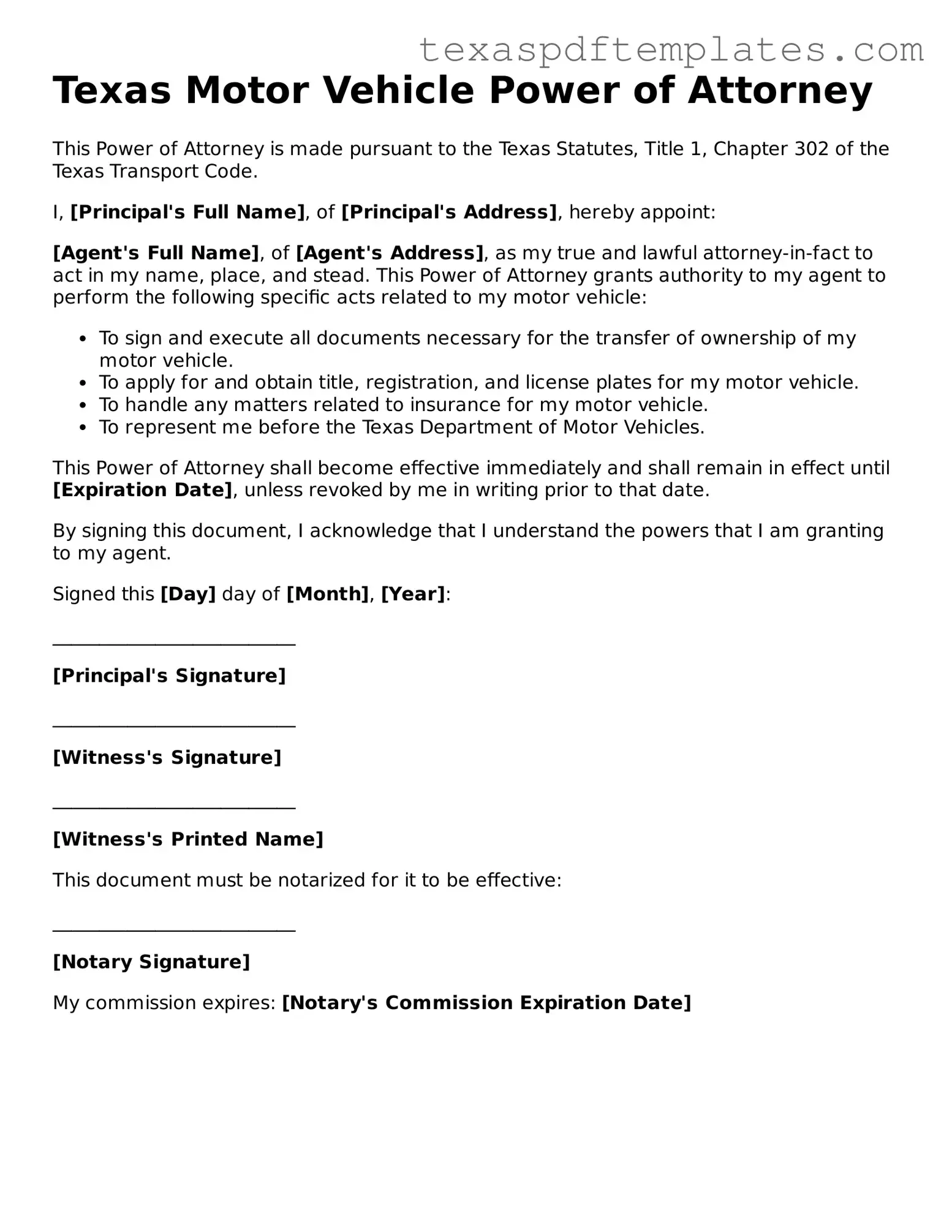Texas Motor Vehicle Power of Attorney
This Power of Attorney is made pursuant to the Texas Statutes, Title 1, Chapter 302 of the Texas Transport Code.
I, [Principal's Full Name], of [Principal's Address], hereby appoint:
[Agent's Full Name], of [Agent's Address], as my true and lawful attorney-in-fact to act in my name, place, and stead. This Power of Attorney grants authority to my agent to perform the following specific acts related to my motor vehicle:
- To sign and execute all documents necessary for the transfer of ownership of my motor vehicle.
- To apply for and obtain title, registration, and license plates for my motor vehicle.
- To handle any matters related to insurance for my motor vehicle.
- To represent me before the Texas Department of Motor Vehicles.
This Power of Attorney shall become effective immediately and shall remain in effect until [Expiration Date], unless revoked by me in writing prior to that date.
By signing this document, I acknowledge that I understand the powers that I am granting to my agent.
Signed this [Day] day of [Month], [Year]:
__________________________
[Principal's Signature]
__________________________
[Witness's Signature]
__________________________
[Witness's Printed Name]
This document must be notarized for it to be effective:
__________________________
[Notary Signature]
My commission expires: [Notary's Commission Expiration Date]
